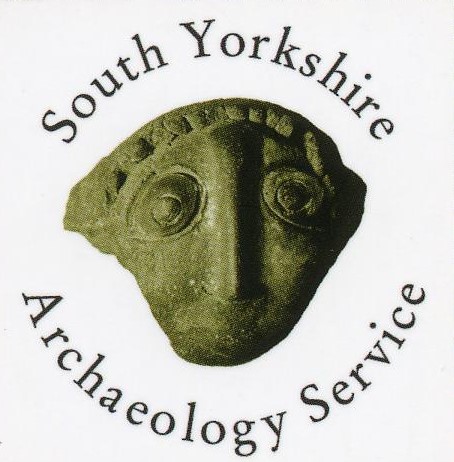Roscoe Wheel (Rivelin Waterpower Sites)
Location/Address
600m downstream of Glen Bridge, Rivelin Valley Road, Sheffield S6 5PH
Type
Other site, structure or landscape
Assets that cannot fit any of the other categories. This category includes sites of archaeological interest, where the original form and function may not be apparent without the use of archaeological techniques and interpretation.
Description
Former water-powered grinding Wheel and water management system. One of the Rivelin Waterpower Sites. Also known as "Hoole's", "Holme Intake" or "Willow Bank" Wheel.
Roscoe Wheel and associated water management system are the remains of a mill water-powered site that dates from 1725 and was used for cutlery, fender, file & saw grinding, polishing and as a blacking mill. It was in use until at least 1922, but reported derelict in 1936. Roscoe Wheel was unusual in the valley, having a breast-shot waterwheel and a two-storey building. Some traces of the building can still be seen, including the wheel pit arch and outfall from the pit into the tail goit, as well as traces of the cottages that were built into the hillside next to the Wheel.
The water management system extends to the north-east and south-west of the site of the former mill buildings, feeding from and into the adjacent river. The Roscoe weir is still in good condition and is particularly unusual: the long, dressed stone slope has three changes of gradient, and there are two top kerbs – the upper one is a double-arc, which is unique in Sheffield. Although now dry and wooded, the outline of the mill dam is still visible, including the remains of the dam wall. There is a short head goit. The tail goit is culverted underground for about 50 m and then runs along the base of the hill slope and into the river close to the remains of the weir for New Dam/Spooners Wheel.
Roscoe Wheel is located on the north side of the river, near Roscoe Bridge. It lies on the Rivelin Trail footpath about half way between the Rivelin Park Cafe and Glen Bridge (the ‘S-Bend’ on Rivelin Valley Road). There is open access to the site, which is owned by Sheffield City Council. The trail can be accessed from various points along Rivelin Valley Road, or from the north (Stannington) side of the valley (Roscoe Bank and Rivelin Park Road).
A marker post installed at the site by Rivelin Valley Conservation Group gives a brief history and links to a website where further information and pictures can be found.
Roscoe Wheel is one of the 20 water-powered mills built in the Rivelin Valley. This sequence of Rivelin mills and mill dams forms an essential part of Sheffield’s heritage. They also have a broader national and even international significance in relation to the history of the Industrial Revolution in Sheffield.
Further information and pictures of Roscoe Wheel and other sites in the Rivelin valley can be found at https://rivelinvalley.org.uk/rivelin-trails-2/. See also the books ‘Walking the Rivelin’, by Sue Shaw and Keith Kendall (6th edition, 2019, Rivelin Valley Conservation Group), and ‘Water Power on the Sheffield Rivers’, by C. Ball, D. Crossley, N. Flavell (Editors), (2nd Edition (2006), South Yorkshire Industrial Society).
Statement of Significance
Age
Dates from 1725. In use until at least 1922, but reported derelict in 1936.Rarity
This asset is an integral part of an especially rare system of waterpowered sites, described in more detail in the Rivelin Waterpower Sites asset. The form of the weir, in particular the upper one kerb consisting of a double-arc, is unique in Sheffield. The site is also unusual locally in having a breast-shot waterwheel and a two-storey building.Architectural and Artistic Interest
This site is one of a group that collectively and individually demonstrate the construction techniques and interrelationships of waterpowered sites, described in more detail in the Rivelin Waterpower Sites asset. The Roscoe weir is still in good condition and is particularly unusual: the long, dressed stone slope has three changes of gradient, and there are two top kerbs – the upper one is a double-arc, which is unique in Sheffield. Some traces of the building can still be seen, including the wheel pit arch and outfall from the pit into the tail goit, as well as traces of the cottages that were built into the hillside next to the Wheel.Group Value
This site contributes to the significance of the Rivelin Waterpower Sites asset and to the waterpower sites on other rivers in the city, and is integral to an understanding of the role and impact of waterpower in Sheffield.Historic Interest
This site is of historic interest in its illustration of the uses of waterpower, central to the reputation fame and identity of Sheffield; the many and varied uses for waterpower; the industrial development of the area; the impact of communications and topography; the lives and trades of working people; and the practice and policy of landowners, This is described in more detail in the Rivelin Waterpower Sites asset.Archaeological Interest
This site has the potential for underground remains that with further investigation could reveal their development over time, including changes of use and the evolution of industrial processes and construction techniques. Because the sites were not overtaken by later industrial development, any remains are likely to be relatively intact.Landmark Status
The Rivelin Valley is an extremely popular leisure destination for local people, largely defined by its waterpower remains, including this site.Images and Documents
Date Listed
15 Aug 2022
Last Updated
19 Apr 2022
Comments and Feedback
Do you have any questions or more information about this record?



%20resized.JPG)

%20resized.jpg)
